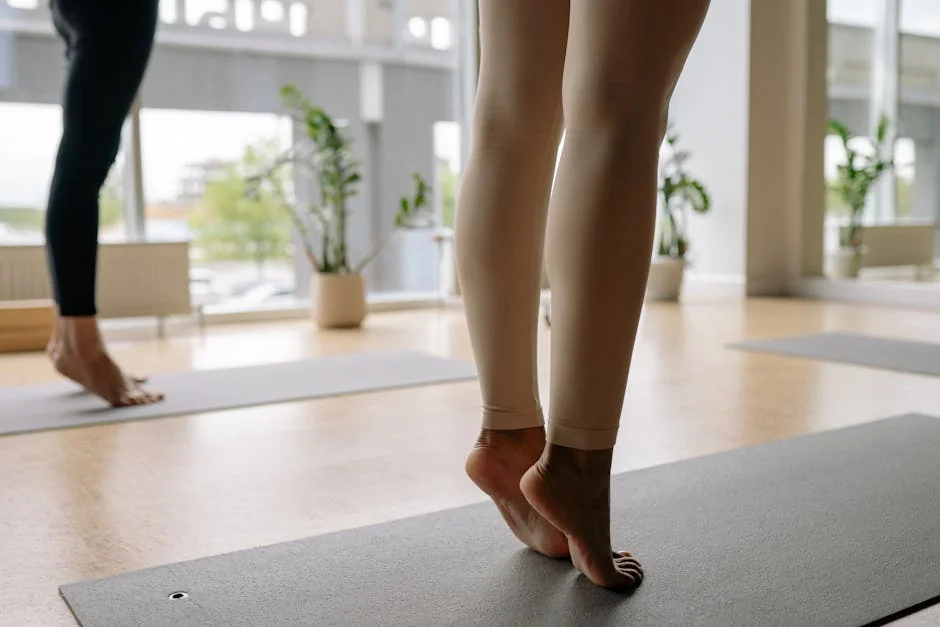Feeling like "mindfulness practices" is a phrase you hear everywhere? You're not alone. While the term is incredibly valuable, sometimes we need another word for mindfulness practices to refresh our understanding or find a new entry point. The truth is, this powerful state of awareness goes by many names and takes many forms, from ancient meditative techniques to simple, everyday actions.
This guide is your map to this rich landscape of conscious living. We'll move beyond the buzzword to explore precise synonyms like present-moment awareness and centering, uncover specific types of meditation like Vipassana and Zazen, and reveal how you can transform ordinary activities into powerful opportunities for focus and calm. If you're ready to deepen your practice or simply find a new way to describe it, you’ve come to the right place. Let's begin.
Beyond the Buzzword: Finding Another Word for Mindfulness Practices
Mindfulness practices, at their core, are the intentional training of your attention to stay anchored in the present moment without judgment. While the term is perfect for describing this category, its popularity can sometimes make it feel generic. Exploring other words for mindfulness practices isn't just about semantics; it's about finding the specific flavor of awareness that resonates with you. Each synonym carries a unique nuance, offering a slightly different doorway into the same state of conscious presence. By understanding these related terms, you can better define your intentions and choose the approach that fits your needs.
Core Concepts: Key Synonyms for Mindfulness
When you strip away the formal practice, what are you actually doing? You are cultivating a particular quality of mind. Here are the most direct mindfulness synonyms that describe this state of being.
Awareness / Present-Moment Awareness: This is the most fundamental synonym. If mindfulness is the practice, awareness is the result. It’s the simple, raw sensation of being conscious of your thoughts, feelings, bodily sensations, and the environment around you, right here, right now. It’s the bedrock upon which all other practices are built.
Attention / Focused Attention: This term highlights the active component of mindfulness. It’s the deliberate act of directing your mind to a single point, such as your breath, a mantra, or a physical sensation. When your mind wanders, bringing it back is an act of re-applying your attention.
Contemplation: This word suggests a more reflective form of mindfulness. Instead of just observing thoughts pass by, contemplation involves gently holding a specific idea, question, or principle in your awareness. You might contemplate gratitude, impermanence, or a piece of wisdom, allowing insights to arise naturally.
Centering / Grounding: These powerful terms describe practices specifically designed to bring you back to a stable, calm, and balanced state—your "center." This often involves tactile elements, like feeling your feet on the floor (grounding) or focusing on the center of your body, to anchor you during moments of stress or anxiety.
The Practice Spectrum: Types of Meditative Mindfulness
Moving from abstract concepts to concrete methods, many established meditation techniques are essentially structured pathways to cultivate mindfulness. Understanding these types of meditation can help you find a formal practice that suits you.
Vipassana Meditation
Vipassana, often translated as "insight," is one of the oldest Buddhist meditation techniques and the direct ancestor of many modern mindfulness programs. The practice involves observing the reality of your mind and body without attachment, noting sensations, thoughts, and emotions as they arise and pass away. The goal is to gain profound insight into the true nature of existence, leading to a calm and equanimous mind.
Zazen (Zen Meditation)
In Zazen, or "just sitting," the emphasis is on shikantaza—simply sitting in awareness without any specific object or goal. Unlike focused attention practices, you allow thoughts, sounds, and sensations to come and go without engaging with them or pushing them away. You are not focusing on the breath to the exclusion of all else, but rather resting in a state of open, spacious awareness of everything that is happening.
Loving-Kindness Meditation (Metta)
This beautiful practice is a cornerstone for cultivating compassion, which requires deep awareness of your own emotional landscape and that of others. Metta involves silently repeating phrases of goodwill and kindness, first toward yourself and then gradually extending them to friends, neutral people, difficult people, and finally all beings. It is a powerful method for mindfulness meditation for self love and breaking down barriers to connect with a sense of shared humanity.
Body Scan Meditation
The body scan is a foundational practice for developing somatic awareness. It involves systematically moving your attention through different parts of the body, from the toes to the top of the head, simply noticing any physical sensations you encounter—warmth, tension, tingling, or even neutrality. This practice grounds you firmly in your physical experience and is highly effective for releasing stored stress, making it an excellent guided meditation script for relaxation.
Mindful Living: Everyday Activities as Practice
The true power of these concepts is revealed when they move beyond the meditation cushion and into your daily life. Any routine activity can be transformed into a powerful mindfulness practice when done with intention and full attention.
Mindful Eating is a perfect example. Instead of eating while distracted, you bring your full focus to the experience. Notice the colors and smell of your food. Feel its texture as you chew. Taste each individual flavor. This not only enhances the enjoyment of your meal but also improves digestion and helps you tune into your body’s hunger and fullness cues.
Mindful Walking turns a simple journey from point A to point B into a centering exercise. Feel the soles of your feet making contact with the ground. Notice the rhythm of your stride and the movement of your muscles and joints. If you're walking outside, expand your awareness to include the feeling of the air on your skin and the sounds around you.
Active Listening is the practice of bringing full, non-judgmental attention to a conversation. Instead of planning what you’re going to say next, you truly listen to understand the other person. You notice their tone, their body language, and the meaning behind their words. This deep level of engagement fosters stronger, more empathetic connections.
Ultimately, whether you call it mindfulness, awareness, centering, or simply paying attention, the goal is the same: to live your life more fully, with more clarity, calm, and compassion. The best practice is not the one with the most exotic name, but the one you actually do. So explore these different words and methods, find what resonates, and begin weaving that thread of conscious presence into the fabric of your day. This journey often involves mindfulness and letting go of the need for perfection.
In summary, the diverse landscape of mindfulness practices offers a path for everyone, regardless of lifestyle or belief system. From formal meditation to the informal integration of awareness into daily activities like walking or eating, the core objective remains the same: to anchor ourselves in the present moment with acceptance. This exploration has highlighted that these techniques are not about emptying the mind, but about changing our relationship with our thoughts and feelings, thereby reducing stress and enhancing overall well-being, as the many mindfulness meditation practices have been shown to do. The true power of this practice lies not in perfection, but in consistent, gentle effort. We encourage you to view this not as another task, but as an invitation to cultivate a more compassionate and centered way of being. Begin with small, manageable steps, be patient with yourself, and discover the profound clarity and calm that awaits when you simply pause and pay attention. Your journey toward a more mindful life starts with a single, conscious breath.



